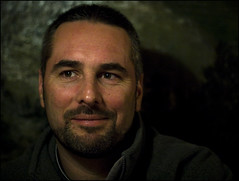Composing Domain-Specific Languages
Last week I was in Bergen (Norway) for the PhD thesis defense of Anya Bagge and the opening of the Bergen Language Design Laboratory. For the occasion of the opening a few people where asked to talk about the history and future of programming language design. Don Sannella talked about the failure of the Extended ML formal methods project. Bjarne Stroustrup talked about social issues of language design such as the (enormous) impact of C++ and the hassles of language standardization (and took my picture during the BLDL dinner). Paul Klint gave a flavour of his new Rascal meta-programming language. Horacio Bouzas and Carl Seger talked about the role of languages in oil exploration and chip design.
As a long time collaborator of the Bergen group, I also was asked to shine my light on language design. Instead of giving a straight up talk about Stratego or WebDSL, I decided to try to give a somewhat more general slant on the currently dominant theme of our research at TU Delft: composition of domain-specific languages. Today I extended the talk for delivery at the TU Eindhoven CS colloquium. I like the style of the talk and it gave rise to a good discussion about the trade-offs between internal and external DSLs afterwards. This is also the start of the development of a lectures series for my MDSD course in the Spring semester. Since there was an expression of interest, I’ve uploaded my slides. They’re presentation-zenish, so there’s not a whole lot of explanatory text and may not be useful without me talking about them. Feedback is welcome.
Abstract The history of programming languages shows a progressive development from low-level programming languages close to the machine, to high-level languages close to the problems being solved with software. Domain-specific languages take this a step further than general purpose programming languages by making assumptions about the class of applications for which the language is intended. Complete applications typically require programs in multiple (technical) domains, which can be catered for by separate domain-specific languages. While such separation of concerns is beneficial for domain expressivity, it often leads to loose coupling and lack of static verification. Hence, the design of individual DSLs needs to be complemented with their linguistic integration.
In this talk, I illustrate these ideas with the design of WebDSL, a domain-specific language for data centric web applications. WebDSL linguistically integrates the definition of data models, user interfaces, actions, access control rules, data validation rules, styling rules, and workflow definitions. While maintaining separation between these concerns through specialized sub-languages, linguistic integration ensures static consistency checking and correct code generation. The language allows developers to concentrate on the essential design of web applications, abstracting from accidental complexity, such as the details of data persistence. The combination of high-level and low-level constructs ensures high expressivity, while supporting customization to application requirements.
